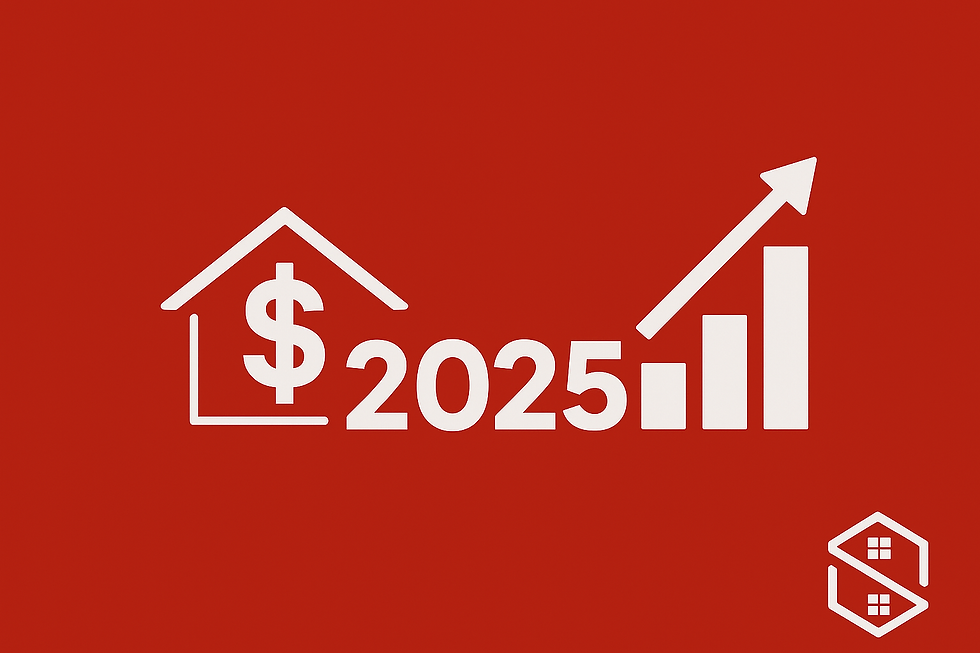The Qualified Mortgage Rule: Impact on Lending, Borrowers & the Market
- StratoBridge Lending
- Oct 13
- 3 min read
Mortgage regulation walks a fine line — protecting borrowers while keeping credit accessible. One of the most significant frameworks in modern lending is the Qualified Mortgage (QM) Rule, which continues to shape how lenders evaluate risk and how borrowers access financing.
In this article, StratoBridge Lending explores how the QM rule affects today’s mortgage market, why Non-QM lending is expanding, and what the data reveals about this ongoing shift.
What Is the Qualified Mortgage Rule?
The Qualified Mortgage (QM) Rule, built from the Ability-to-Repay (ATR) requirement, ensures that lenders make responsible lending decisions. A “Qualified Mortgage” meets specific underwriting criteria designed to verify a borrower’s ability to repay the loan.
Key Features of QM Loans
Verified income, employment, and assets
DTI ratio typically below 43%
No risky features like interest-only or negative amortization loans
Caps on fees (commonly 3% of loan amount)
“Safe Harbor” protection for compliant lenders
This framework creates a safer lending environment but can limit flexibility for nontraditional borrowers — particularly self-employed individuals and property investors.
The Data: How QM and Non-QM Lending Have Evolved
Since the QM rule’s implementation, the lending landscape has evolved significantly. As the chart below shows, Non-QM loans — once niche — are now an important part of the market.

(Non-QM loans have grown from roughly 2% of total mortgage originations in 2018 to around 8% by 2025.)
This expansion reflects the increasing demand for more flexible financing — particularly among real estate investors, self-employed professionals, and borrowers with nontraditional income streams.
Understanding APR–APOR Spread Differences
Another key distinction between QM and Non-QM loans lies in pricing — specifically the APR–APOR spread, or how much higher the loan’s annual percentage rate (APR) is compared to the Average Prime Offer Rate (APOR) benchmark.

(Non-QM loans carry an APR–APOR spread roughly 1.5–2 percentage points higher than QM loans due to greater flexibility and risk tolerance.)
These spreads illustrate why Non-QM products often have slightly higher rates — lenders price in additional risk associated with nontraditional income verification and property-based underwriting.
Market Impacts of the QM Rule
1. Safer but Stricter Lending
The QM rule has greatly reduced the presence of risky loan features, contributing to market stability. However, it also made qualifying more challenging for borrowers with variable or complex income.
2. Rise of Alternative Documentation
Non-QM lenders now use bank statements, rental income (DSCR), or asset-based underwriting instead of tax returns. This opens access to financing for strong borrowers who don’t fit standard documentation molds.
3. Growing Investor Activity
Real estate investors increasingly rely on Non-QM financing. In 2024 alone, investor-focused Non-QM products accounted for more than 35% of Non-QM loan volume — driven by demand for DSCR loans and short-term rental financing.
What This Means for Borrowers
Homebuyers
If you have traditional income and stable employment, a QM loan is often your best path — it provides lower rates, predictable payments, and federal consumer protections.
Self-Employed Borrowers & Investors
If you earn income through business ownership, rental properties, or investments, Non-QM loans may offer better flexibility. While rates are typically 1–2% higher, these loans can leverage your real-world financial strength rather than rigid paperwork requirements.
How StratoBridge Lending Helps Borrowers Navigate Both
At StratoBridge Lending, we make it easy to explore both sides of the market — QM and Non-QM — so you can make informed decisions.
We provide:
Real-Time Rate Estimates directly on our website
No-Credit-Impact Loan Scenarios to explore options safely
QM & Non-QM Loan Programs tailored for homeowners, investors, and self-employed borrowers.
We focus on Texas (TX), Colorado (CO), and Pennsylvania (PA).If you’re a borrower in one of these states, please reach out to us directly. Our team is ready to help you secure financing that matches your investment vision.
The Qualified Mortgage Rule continues to shape lending in the U.S., ensuring responsible underwriting while leaving room for innovation. As data shows, Non-QM lending is growing rapidly, bridging the gap for millions of creditworthy borrowers who don’t fit conventional molds.
With rates, regulations, and investor expectations in flux, success lies in flexibility.
👉 Start exploring your real-time mortgage options today at StratoBridge Lending





Comments